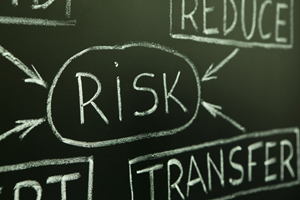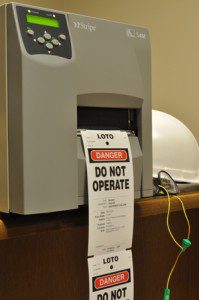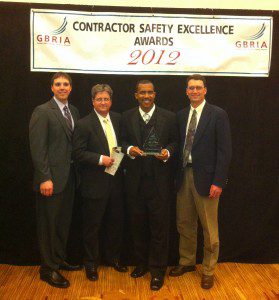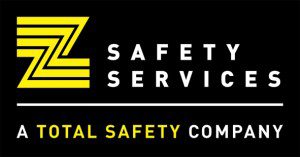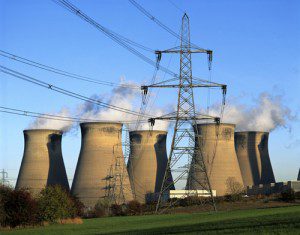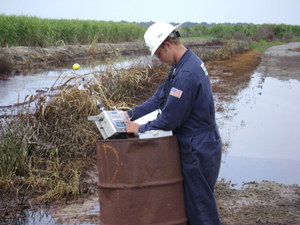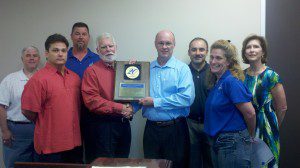In a government-regulation free world, do you think that your company would provide a safe and healthy workplace for its employees? If the opposite were true and every possible rule and regulation imaginable were imposed, do you think that there would never be a workplace accident again? Either side could be easily argued, but political ideologies aside, workers do need a safe and healthy workplace, not only for their own benefit, but for the benefit of the company.
Total Safety provides integrated safety services and solutions designed to keep workers, the environment, the community and assets safe and in compliance, fulfilling our mission — to ensure the safe Wellbeing of Workers Worldwide (W3). We strategically design our line of safety services by taking into account our clients’ needs and various market factors, allowing us to adapt to changing regulations and various requirements. With that said, no matter the regulations, no matter the market factors, there will always be a basic need for risk mitigation and worker and facility protection that assesses, sometimes evolving, needs.
So, how does Total Safety ensure the safety of workers and facilities around the world? Each customer and location is different, so there is not a “one-size-fits-all” solution. Our experts have created a health, safety, environment and security (HSES) life-cycle that:
- Assesses the needs of the client for that particular location, which, at its core, is to maintain a safe and healthy work environment
- Examines current processes, if any, and recommends opportunities for improvement
- Implements improved safety and compliance processes, navigating sometimes complex and demanding regulatory requirements, as well as the requirements of the client
- Monitors implementation and measures outcomes, and
- Enhances the existing implemented program with continual re-assessment of client’s needs.
We approach our business with the aforementioned “life-cycle” because each can evolve both directly because of or independently of the other; therefore, all steps must be taken to ensure safety. Yet despite the increasing focus on safety and compliance services, these functions are still not viewed as core competencies by most businesses. There is the recognition that safety and compliance is an area that needs to be addressed, while minimizing human and economic costs. Recognizing the importance of safety and compliance is important is only the first step. The unyielding recognition that only a true safety culture, accepted by all, will make a difference. Developing a sustaining safety culture within your company is a life-style of sorts. It must be lived, day-in and day-out, by every member of your team, and that is where Total Safety comes in.
Total Safety has this unique ability to integrate safety services, equipment, training, technical expertise and so much more to provide a cohesive and comprehensive solution that is critical to addressing the safety and compliance needs of the client. With this customized solution, our clients, in fact, have improved workplace efficiencies, lower total costs and a reduction in workplace incidents.
Assess the Needs of the Client
This is an important step for both Total Safety team members and the client. By assessing the client’s needs, we can help the client anticipate, recognize, evaluate, control and prevent potential occupational hazard, illness and disease exposure, ensuring that all parties involved are informed and concur. By assessing the client’s potential exposure, we can then begin to provide a road map to prevention, protection and compliance through a process of evaluating and prioritizing the monitoring and control of hazards in the workplace.
It should be noted that, with Total Safety, this is a relationship. We do not intend to “swoop in” to our client’s location and begin listing areas in which we feel safety and compliance can be improved. We strongly feel that no one knows their company better than them, and that most personnel are aware of major areas of safety concern at their facility.
Examine Current Processes and Recommend Opportunities for Improvement
Certain countries and states require employers to implement and maintain an injury and illness protection program (I2P2). These countries include Canada; Australia; European Union member states; Norway; 15 U.S. states and more. If a program is currently in place, we examine current processes and protocols, determine and “holes” that might exist within the program and provide detailed, actionable recommendations for enhancing safety performance and outcomes.
This “front-end” consultative approach is a powerful tool for the client. It helps clients better understand where its strengths and weaknesses are, but most importantly, it exposes opportunities for improvement with actual recommendations and suggestions for improvement. It gives the client not only a goal, but steps on how to attain that goal, supported by an objective third-party opinion.
Total Safety performs efficient, in-depth audits of the client’s facility. Our auditors examine the programs that currently exist at a facility, evaluate its implementation and determine the level of compliance through interviews with a cross-section of facility staff, reviews of records and documentation, and field observation of work practices and equipment.
The typical audit report provided by Total Safety documents the strengths and weaknesses and provides auditor recommendations as necessary for achieving compliance and/or improving current programs. Our auditors supply objectivity, benchmarking capabilities, and the dedicated time necessary for completing the audit and issuing the report in a timely manner.
Implement Improved Safety and Compliance Processes
We structure our line of services to proactively address safety concerns, meeting or exceeding the requirements of applicable regulations and codes, as well as the requirements of the client. The brilliance of Total Safety’s integratable safety services and equipment is that as much or as little as needed can be utilized to achieve the safety and compliance needs of the client. We pull from a full gamut of service and equipment offerings to deliver a solution to, sometimes unique, needs.
By implementing this customized solution, we manage a comprehensive range of safety hazards facing the client’s personnel and facility and function as an extension of the client’s complete safety organization. In addition, we capture the demand for additional, complementary safety solutions based on our unique ability to integrate our full range of services and onsite delivery model, thereby, saving the client money, time and effort.
Monitor Implementation and Measure Outcomes
To ensure that the implemented safety and compliance processes are achieving the stated safety objectives, our team monitors the program, measures outcomes and captures extensive data, as well as proper documentation, to support analysis of the safety performance and compliance with regulatory and internal standards. Once the data is captured, we then compare to industry standards and peer performance to determine relative safety performance.
Compliance monitoring from Total Safety can also include regulatory compliance inspections. Our exclusive Smart Inspections program utilizes highly-sophisticated, handheld computing technology to efficiently manage ongoing regulatory compliance inspections. Once our Smart Inspection is complete, our trained service technician downloads the resulting information, providing all of the necessary regulatory paperwork and other reports on the spot. This process takes just a few seconds and can save hours in completing manual paperwork. The reports created will detail all inspection information, including each asset type inspected, a listing of the points of inspection and a pass/fail response that is clearly listed.
Enhance with Continual Re-assessment of the Client’s Needs
An imperative “step” in the overall life-cycle is the re-assessment of the client’s needs and the implemented safety and compliance program. This step allows for a true safety culture, as it fosters continuous internal reflection and company-improvement, as well as forces the company and its safety culture to avoid complacency and to only get better and better.
By re-assessing the safety and compliance program, we identify areas for improvement, determine the root cause of systematic safety deficits and develop specific recommendations for necessary updates to the safety program, leveraging safety data and documentation to drive improved safety outcomes. We again provide a road map of detailed and specific recommendations, reinforcing our value proposition, and re-engage in the assessment of the safety and compliance program. This further allows for the inherent evolution of safety regulations and processes. As regulations and requirements change, so do the client’s needs, and this life-cycle allows for the continual revitalization of the safety program, if needed.
Why Choose Total Safety for Your Safety and Compliance Needs
Hazardous environments are expensive. The high costs associated with failure, maintenance and equipment pose significant incremental capital outlay for companies. As a result, companies choose to outsource its safety and compliance needs to third-party companies to lower its overall costs and improve overall compliance, allowing for a more direct focus on its core business. Once the decision has been made to outsource, companies prefer to build a relationship with Total Safety because we are a single-source safety solutions provider.
Utilizing a single source for safety services and equipment eliminates the added cost and logistical challenges of managing multiple vendors, allowing for better accountability for the reliable and responsive delivery of safety solutions. Total Safety maintains an attractive leadership position as a global, comprehensive safety service source that provides the needed depth of technical expertise and resources to address the full spectrum of your safety needs.
Look to Total Safety to provide a customized solution with:
- Respiratory protection
- Gas detection and monitoring, including H2S
- Fire protection, including engineering, design, installation, inspection, testing and maintenance
- Communications, including design, installation, maintenance and repair
- Environment, health and safety, including industrial hygiene, process safety management (PSM), professional safety and environmental safety
- Specialized safety personnel, including safety technicians and attendants
- Medical management, including onsite emergency medical technicians (EMTs)
- Safety training, in-house or onsite
- Rescue and emergency response
- Materials management
On our watch, our goal is to provide high-quality safety and compliance solutions and equipment in a measurable, cost-effective manner, without compromise. We stand behind the promise we make to each of our clients — providing safety services that work, while helping our clients protect lives, property and the environment.



